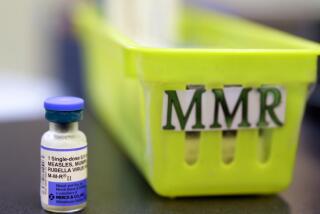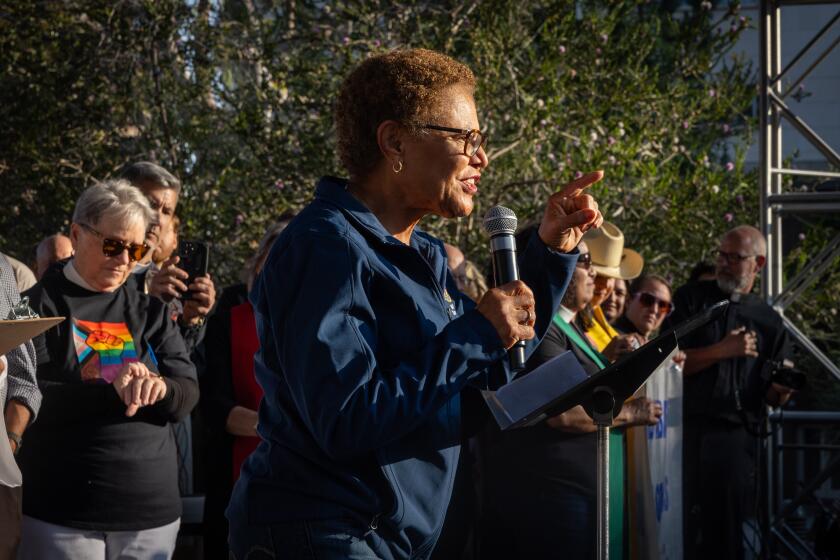State’s whooping cough surge may be tied to lagging immunization rate
- Share via
Public health officials say California’s lackluster immunization rates could be a factor in the epidemic spread of whooping cough, a bacterial disease expected to take its largest toll in the state in five decades.
California is one of only 11 states that does not require middle school students to receive a booster shot against whooping cough, also known as pertussis, which infects the respiratory system.
The state is the only one in the nation to report such a dramatic surge in pertussis, according to the U.S. Centers for Disease Control and Prevention. Five newborn babies in California have died so far this year, and at least 910 people are confirmed to have the illness.
Last week, California health officials said cases of whooping cough have quadrupled compared with last year.
“People are not getting the booster at age 11 or 12, which is recommended by the CDC,” said Dr. Anju Goel, deputy public health officer for Marin County. “It’s something families don’t necessarily think of [unless] there’s a requirement for school entry for this booster.”
Adolescents can play a major role in transmission of whooping cough; the bulk of pertussis cases in Marin County have been diagnosed in 5- to 17 year-olds. Located just north of San Francisco, Marin County, with a population of 250,000, has been one of the worst-hit counties statewide, recording 187 cases — more cases than in the past 10 years combined. Los Angeles County, with a population of 10 million, has recorded 148 suspected cases so far this year.
Just 43.7% of California adolescents had the vaccine for whooping cough, known as Tdap, in 2008, according to the CDC. Although California’s rate is better than the national average of 40.8%, some states requiring the shot for adolescents do far better.
The booster shot — approved for adolescents and adults by the U.S. Food and Drug Administration in 2005 — is important because immunity to whooping cough can begin to wane five years after illness or inoculation. The booster shot is recommended for anyone who will have contact with newborn babies, who are too young to be vaccinated and can become gravely ill quickly and die.
Efforts to require the whooping cough shot in adolescents have stalled in the California Legislature in recent years because of the budget crisis. Support has been widespread in the Assembly, but the bill has failed to win support in the Senate appropriations committee.
One concern is that California would have to pay hundreds of thousands of dollars for vaccinations for children on Medi-Cal, the government insurance program for the poor, said Assemblyman Juan Arambula (unaffiliated- Fresno), who has been trying to require the shot since early 2008.
“Sometimes we can be penny-wise but pound-foolish,” said Arambula. He said the cost of immunizations would be less than the state’s future cost of paying infected children’s hospital bills.
Public health officials also worry that some parents may decline vaccination because they believe that vaccines cause autism, an idea that has been studied and rejected by scientists.
Dr. Robert Benjamin, deputy health officer for the Alameda County Public Health Department, said the whooping cough epidemic should cause parents to reexamine their decision to skip or delay recommended vaccinations.
“Anyone who has experienced pertussis, either themselves or in their kids, they know this is not a disease to mess with,” Benjamin said. “This is a disease that can kill the most vulnerable newborns — not only in their households, but in the households of other people.”
More to Read
Sign up for Essential California
The most important California stories and recommendations in your inbox every morning.
You may occasionally receive promotional content from the Los Angeles Times.














